Writes Saad Rafi
In a highly, apparent, politically active society, such as ours, burning social issues are thrown behind the back. More often than not! Hence, I, for one, took some time out to deliberate on an issue which has deep socio-legal consequences. The issue pertains to Juvenile Justice.
I must admit that this issue is so multi-faceted and diverse that it would require more than just a cerebral effort to fathom its true nature. It requires what is ordinarily called insight. Therefore, we all must continuously try and bring together the scattered bits and pieces, objectively, together into one meaningful whole. So that, we may have a look at the bigger picture.
First things first. Legally speaking, juvenile justice is that part of criminal law, applicable to people not old enough to be held legally responsible for criminal acts. It aims at rehabilitation rather than sentence. Holds reformation over retribution. It is invoked where legally underage individual “deviates” from the normal course of social life and exhibits rather unsocial, if not anti-social tendencies. Unfortunately though, in this State of ours, clearly it has become a practice to hold a full criminal proceedings to deal with a simple matter of pilfering, “stone pelting” and for “other kinds of acts and omissions in conflict with law” by an underage citizen.
Surprisingly enough, even for offences committed under the rather heavy-handed Narcotic Drugs and Psychotropic Substances Act, the gravity fluctuates. Depending upon the “Quantity” recovered from the suspect. These are legally classified into “Small”, ”Intermediate”, ”Commercial”. Making a continuum. Nonetheless, in this State, an adolescent sleeps a juvenile and, presto, wakes up an adult. And, this magical transformation occurs on the morning of his sixteenth birthday and her eighteenth birthday. In other words, on completing sixteen years for a boy, and eighteen years for a girl, a person ages out to be a “juvenile”. Paradox. Irony. Dichotomy. Call it whatever you may. This is a stark reality, that needs to be realistically looked at.
Albeit, juvenile delinquency has several causes – psychological, emotional, hereditary, imitation, media – yet it is essentially a social phenomenon. A few of the other rather widely known reasons of juveniles’ actions and behaviour, in conflict with law, are, modernisation, broken homes, poverty, sub-cultural differences, school dissatisfaction and other psychological factors etc. Even these afore-mentioned causes can ultimately be traced back to social roots. These factors, however, are rather constant and are universally found in almost all societies. Their relative degrees may vary though.
Nevertheless, there is yet another, rather lesser known, cause that sees underage children ending up in police lock ups and eventually paraded handcuffed in Courts. To me this is latent, yet most potent cause in our society. It is the crux which all other causes generally break down to. It is something that instantly makes a felon out of an adolescent. It is called the “Social Current”.
Social current is a social phenomenon that holds sway over the individual. Example, feeling of enthusiasm and muscle in a mob. Or, anger produced due to familial breakdown or societal tensions. Or, despair produced by the ever growing economic inequalities. Meaning, collective reality has a tendency to make a stronger impact which may suppress individual’s own will. Coupled with a society in transit (say from ‘other worldly’ to ‘this worldly’) phenomenon, leave the individuals rather puzzled and strayed – emotionally, mentally, and physically. They tend to experience a fracture somewhere between norms and values, making them all the more vulnerable. Result. Amongst the people in general and juveniles in particular, a psychological state evolves marked by a sense of futility, lack of purpose, and emotional emptiness. Now, we have all ingredients for perfect recipe of delinquent behaviour invoking immediate criminal liability as a consequence.
Social currents are a ubiquitous routine in all societies in general, but touch pandemic levels in turmoil (political or otherwise) ridden societies in particular. And our society apparently, hanging onto the rather turmoil side of the balance, is bound to give rise to greater degree of social currents. Hence, say, when a mob gathers on the street, due to whatever reason, excitement reaches a fever pitch. It is bound to appeal, by all means, to the adrenaline rush of the younger blood. His individual will is thus, overcome by the collective, leaving him with no option, but to go with the flow of the current so produced. What I mean to say is that, a “juvenile in conflict with law”, displaying a particular behaviour, at a particular point of time, may have purely overwhelming social causes to it, rather ideological, political or individual. Ergo, it would be an astronomical faux pas to treat a ‘juvenile in conflict with law’ here in Kashmir on level grounds with a ‘juvenile in conflict with law’ in any other State.
Against this backdrop, when we see a juvenile, say, a “stone pelter” or an underage pilferer etc, we have to ask ourselves a question. Does he normatively display a “criminal behaviour”, be it ‘individual’ or ‘ideological’? Or, whether he has fallen prey to a “social current” of one or the other sort? We must be in a position to be able to make an intelligent distinction between a delinquently active juvenile and juvenile fallen victim to a social current. For this, we may initiate the following steps.
Firstly, a State Specific Juvenile Justice legislation must be framed, the structural and functional dynamics of which, encompass almost every aspect that our society has experienced over the past twenty years. And, the impact that it has exerted on our youth, including the fluctuating law and order situation, as they were born in it, moulded by it. Secondly, the police must spurn “laaton ke bhoot” approach while dealing with such offenders. The must rather don upon themselves, the role of an “activist”, rather than a typical law enforcer who goes by the book. A juvenile offender must be treated like a child witness rather than an accused. This may include dressing in “plain clothes” while arresting or escorting a juvenile through market or the Court so as to avoid public attention. If this seems difficult, then at least, every attempt must be made to conceal their identity. Say slipping hoods and masks over their faces. Use of handcuffs of fetters may also be avoided. This would help to keep the feeling of alienation from making an indelible groove on the lily-white minds of juveniles. Thirdly, assistance of “qualified and trained” psychologist may be availed to lay down broad parameters of classifying criminality in juveniles. Also, appropriate counselling may be provided to such erring juveniles. By “trained and qualified” I mean “trained and qualified”. Fourthly, separate Courts must be established far enough from the city centre so as to avoid making public their identity. Fifthly, the Courts must keep doors open to confer on person who has aged out the “benefit of juvenility” after a judicious inquisition. In short within the bounds of reason we must let legally underage people have every latitude. Sixthly, great responsibility lies on the shoulders of the civil society to be constructively active in spreading the legal aspect connected with this issue. Because this is an issue about which the societal members know least what is happening. Much less to protest!
As a part of the lawyer fraternity, with the best of intentions I must say that, it is very heart wrenching to see children, some of them as young as nine year old, heartlessly paraded handcuffed within the premises of the Court. Only constraining me to make a moderately intelligent presumption about their condition, inside the police stations, the very next moment. We must remember that, what we hold in handcuffs today is our own tomorrow. That, it is up to us as to how we wish to shape it. And now is the time to make positive and constructive changes. Indeed, tomorrow is the time that will come to pass.
The Author is a Lawyer at J&K High Court






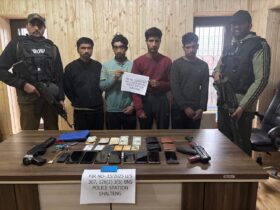

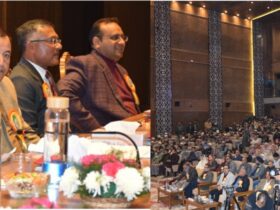



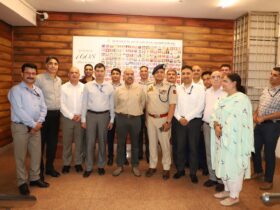
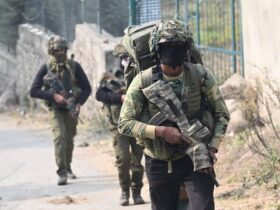
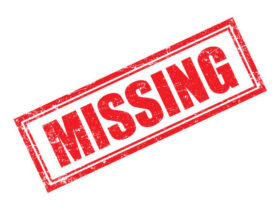
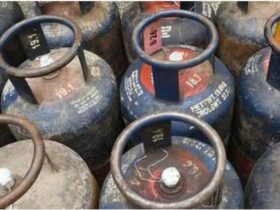
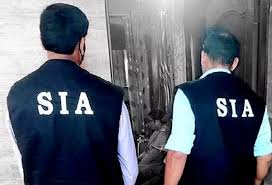
Leave a Reply